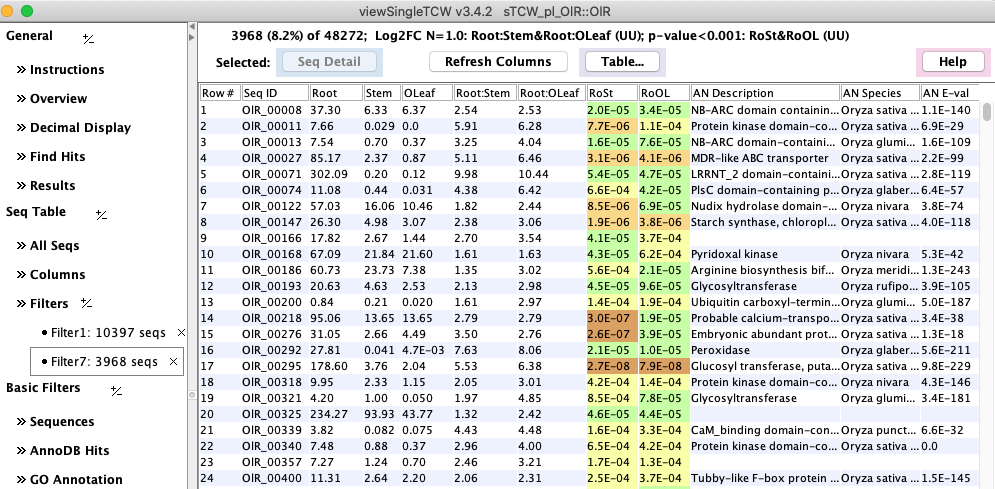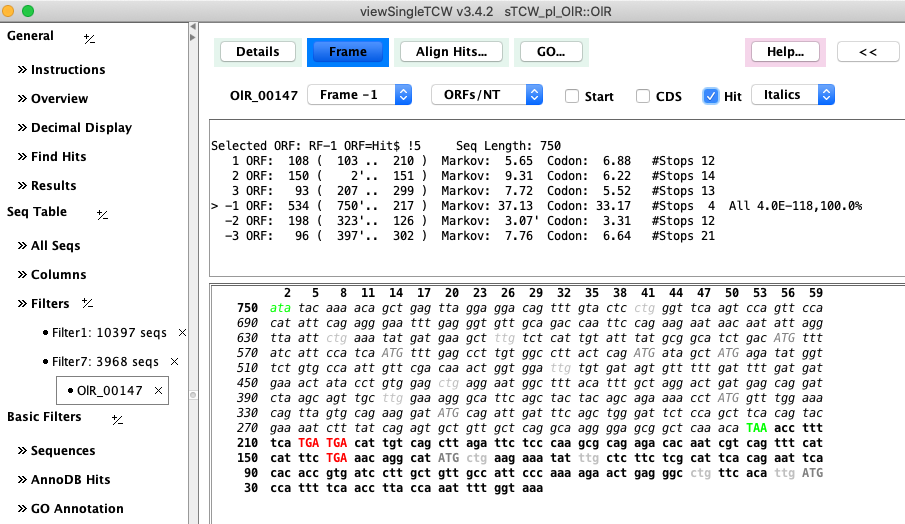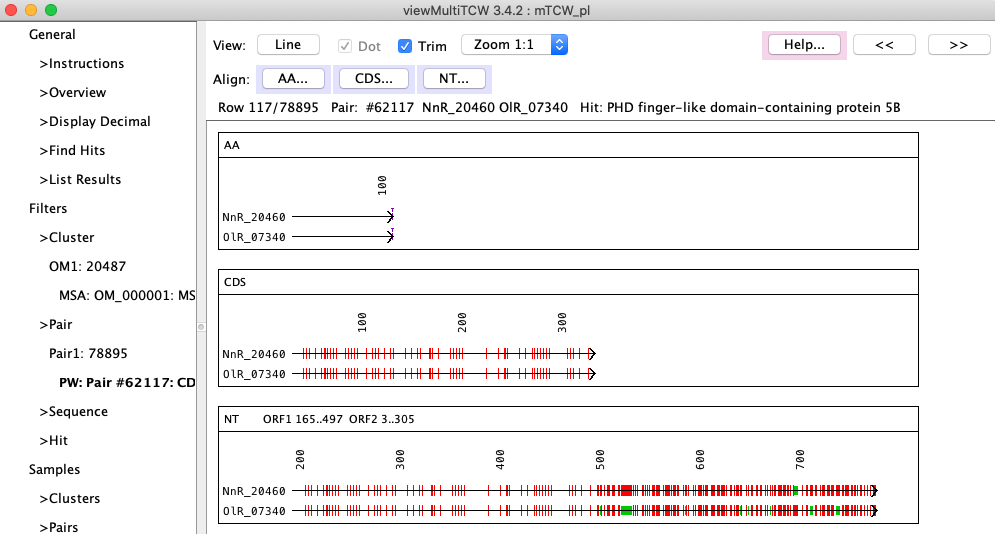|
TCW provides analysis and query for sequences (transcriptome, proteome), and comparison of species sequences.
TCW uses Java, mySQL, optionally R, and various
External packages.
It has been tested on Linux and Mac.
 The latest release (post-v4.0.1) is available from the Github links below.
The latest release (post-v4.0.1) is available from the Github links below.
| Github Download
|  TCW_4.tar.gz
TCW_4.tar.gz
| Executables, demos, external packages, R scripts
| |
| | Github Documentation
|  TCW
TCW
| Main page
|  Summary
Summary
| Inputs, outputs and processing
|  Docs
Docs
| Documentation pages
| |
| | Local
|  v4.0.1
v4.0.1
| Last release on AGCoL
| |
| | Reference
| | C. Soderlund (2022) Transcriptome computational workbench (TCW): analysis of single and comparative transcriptomes. BioRxiv
| | C. Soderlund, W. Nelson, M. Willer and D. Gang. (2013) TCW: Transcriptome Computational Workbench. PLoS ONE
| |
| | Funding
| | All upgrades starting with TCW v1.3 have been developed by CAS without funding.
| | This project was funded in part by National Science Foundation grant IOS-1044821.
| | NSF Disclaimer:
Any opinions, findings, and conclusions or recommendations expressed in this material are those of the author(s)
and do not necessarily reflect the views of the National Science Foundation.
|
|

Figure 1: viewSingleTCW - sequence table

Figure 2: TCW computed ORF.

Figure 3: viewMultiTCW - alignment
|
|


 The latest release (post-v4.0.1) is available from the Github links below.
The latest release (post-v4.0.1) is available from the Github links below.


